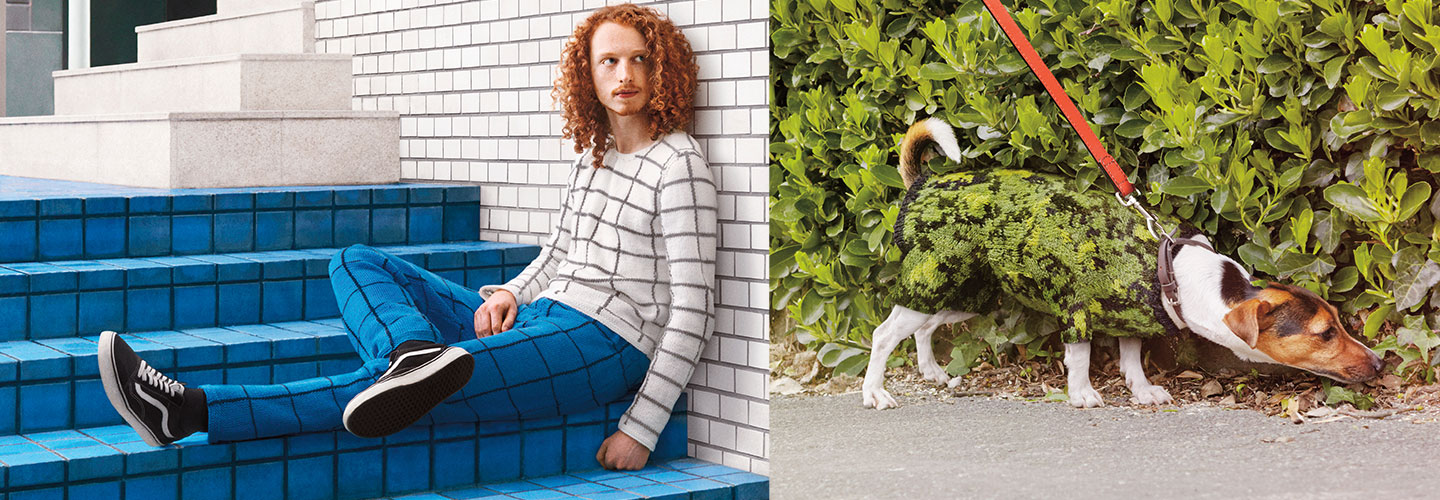Most artists want their creations to stand out. But Nina Dodd, a knitter who lives in Brighton, England, creates clothing designed to blend in perfectly. From tile-patterned walls to leafy landscapes, Dodd’s creations seamlessly match up with their surroundings—and they’re all made out of yarn.
The Knitted Camouflage project started with a bus seat. Buses aren’t known for their fashion-forward upholstery, but that didn’t stop Dodd from being inspired by one. One day, she took a closer look at the bold geometric pattern covering the seats of the bus she rides every day and decided it would make a perfect knitted sweater. “It was so obvious to me that it would look good,” she says.
Most artists want their work to stand out. Not Nina Dodd. She’s a knitter who lives in Brighton, England. She creates clothing designed to blend in perfectly. Dodd has made clothes that match up with everything from checkered walls to leafy landscapes. And they’re all made out of yarn.
The Knitted Camouflage project started with a bus seat. Dodd had been riding the same bus every day. One day, she took a closer look at the bold pattern covering the seats. She decided it would make a perfect knitted sweater. “It was so obvious to me that it would look good,” she says.

